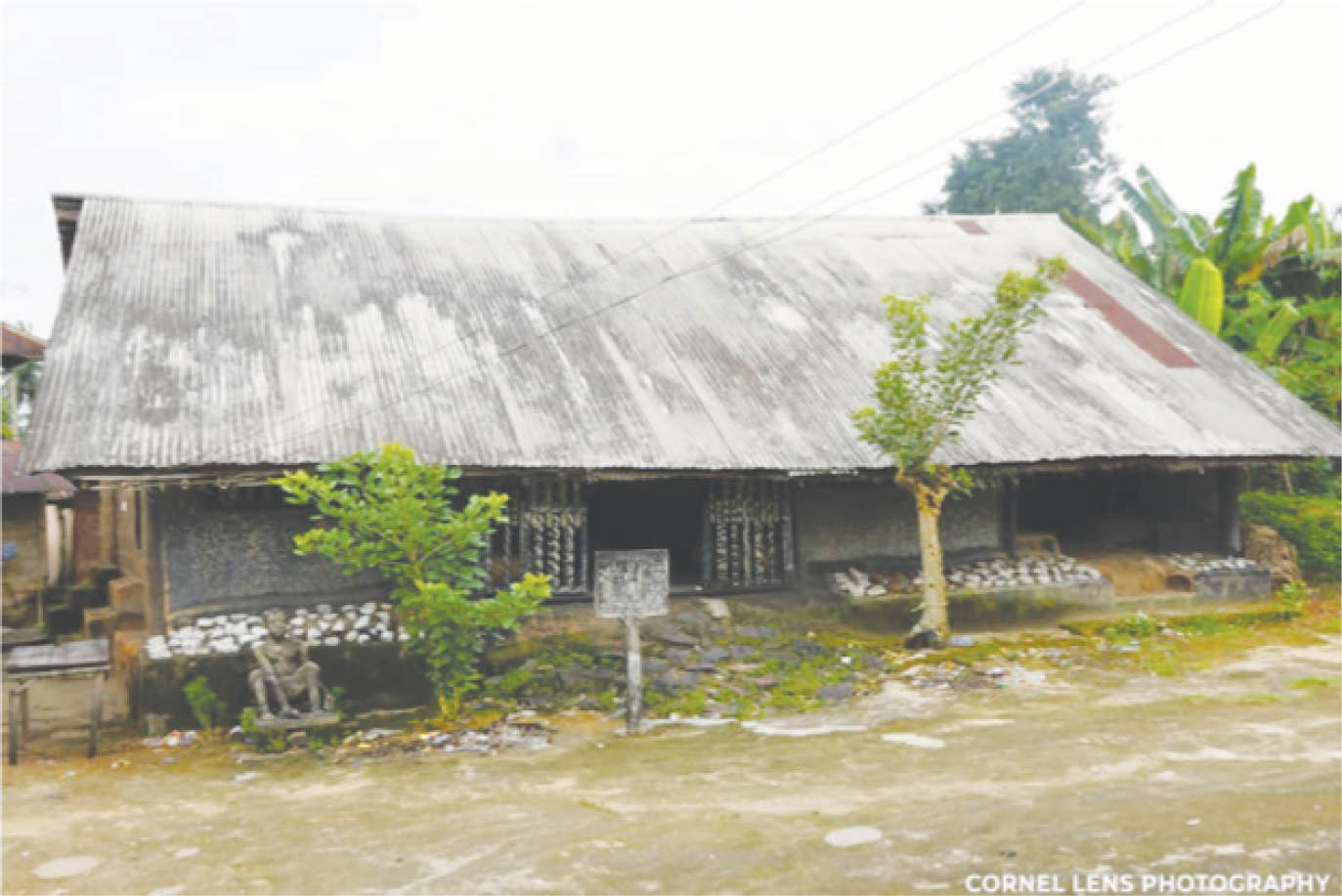Okoroji House: Rich in artifacts
South East Trust met with Akachi Umere whose residential apartment is a stone throw from the house. He and the elders demanded for hot drink, kola and some items from our correspondent before he was conducted round the building

Okoroji House: Rich in artifacts
The Okoroji House Museum or Okoroji House located in Ujari, a village in Arochukwu, Abia State, was declared a national monument in 1972 by the National Commission for Museums and Monuments. What is in this not-too- popular house that makes it very significant?
South East Trust visited the house built during the 17th century by Maazi Okoroji Oti, a local chief and slave merchant who was active during the Trans-Atlantic slave trade. The house is made of mud with its roof made of aluminium zinc. The Okoroji House is one of the monument sites that has rich artifacts. The interior showcases various sacred shrine objects, historical artifacts, slave chains, brass manillas, swords and guns.
- El-Rufai and the miseducation of Nigerian youths (I)
- Insurgency: IOM, WFP, Korea open centre in Yola to empower IDPs
To many, the monument site blessed with ancient artifacts gives vivid information about how the people lived over 300 years ago, most especially in the early days of contacts and trade between local merchants and the white men.
South East Trust met with Akachi Umere whose residential apartment is a stone throw from the house. He and the elders demanded for hot drink, kola and some items from our correspondent before he was conducted round the building
Some artifacts such as bundles of wooden sticks, handcuffs, old pots and chains can be seen at the outer section of the house.
The seats were built from clay. They were built in such a way that they face each other. On the left of the door, leading to the inner chambers, is also a clay seat with a metal chain that hangs from the roof to the floor.
That was where Okoroji used to sit to hold court, according to Umere. He sent out different signals by the way he would draw the chain. His acolytes knew what to do once he did that.
On the right-hand side of the door is another chain with cuffs obviously used to hold prisoners. Farther on the left, by the wall, is what looks like a shrine.
On the top is a human skull. It looks old. There is a crack on one side of the skull shows how the person died. Up on the ceiling, there is a carved wooden image of leopard. There are also old calabashes and skulls of wild animals held together in bunch and hung on the wall. There are about three wooden drums, a broom and many other artefacts.
Umere explained that Okoroji used a bunch of sticks of same length tied together on the left of the house to keep tap of his debtors and who and when they were supposed to pay. There is a huge metal pot said to have been used for cooking for the slaves.
Significantly, the Okoroji House in Ujara, is a few metres from where the Scottish missionary, Mary Slessor, used to have her house. Not too far away from the house, is the Old Presbyterian Church, Obinkita which is said to be over 100 years. The site was said to be an evil forest where corpses of twins and others whose deaths were considered a taboo were dumped.
